Share Science! showed science communication has flair, impact & meaning
17. 10. 2025
On 9 October, more than 40 scientists, marketers, educators, and industry professionals gathered at the Institute for Nanomaterials, Advanced Technologies, and Innovation. Together, they explored a topic that remains somewhat challenging in academia: how to communicate science in a way that is clear, engaging, and inspiring enough for others to understand, follow, and ideally support.
The Share Science! event featured eight inspiring presentations divided into two blocks, with lively moderated discussions in between. Each speaker offered their unique perspective, but one thing was clear: if we don't start taking science communication seriously, science will remain hidden.
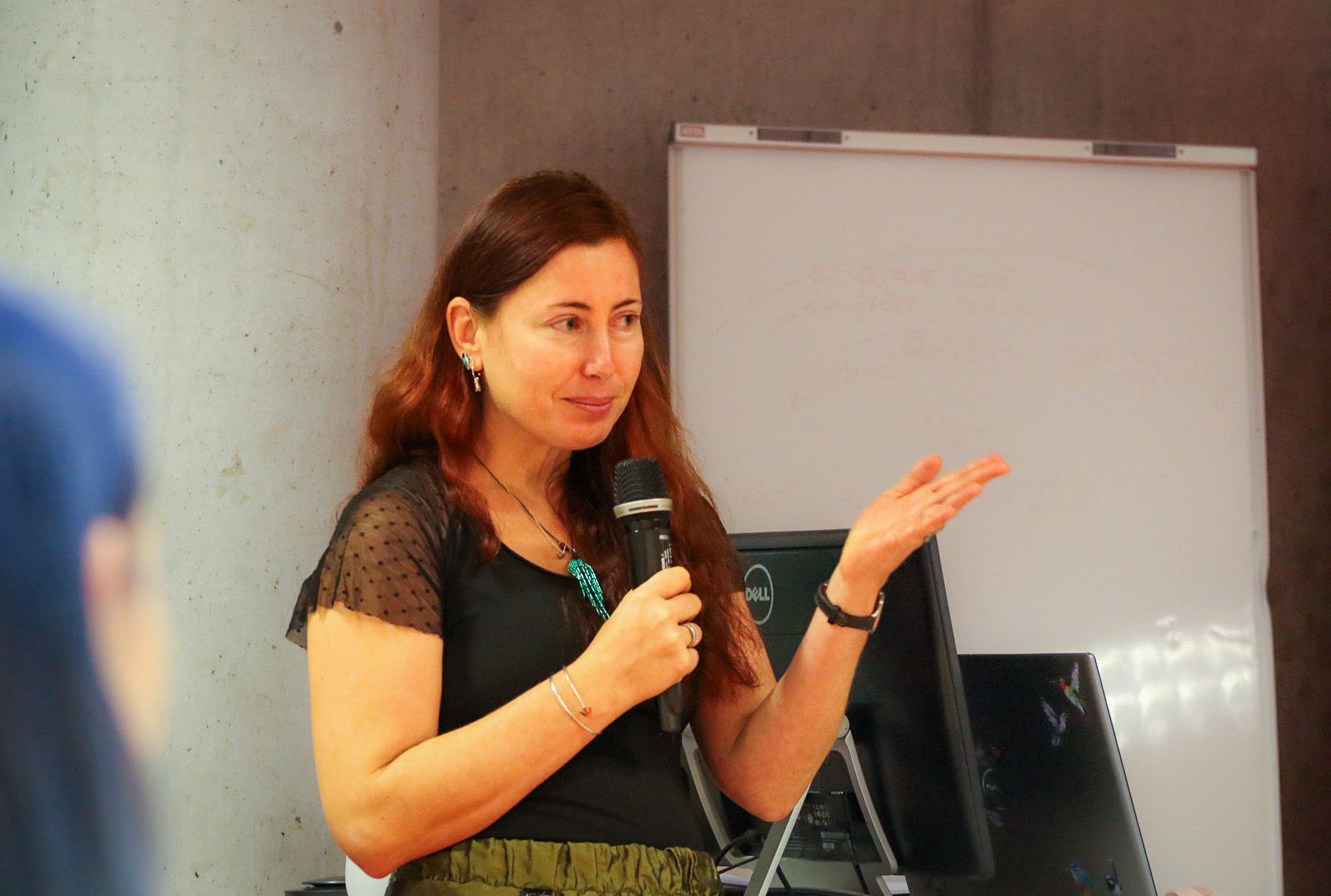
Instagram that entertains the world
Pavlína Konopáčová and David Mareš from CXI TUL gave a modern lecture on how to turn a nanochemistry department into a successful Instagram account. Its content is followed by thousands of people and its videos reach millions of views. But it didn't happen overnight. They started with experiments, blind alleys and unsuccessful formats. Today, they can advise others on how to humanise scientific content, i.e. how to transform it into visually attractive messages that will appeal even outside the academic environment.
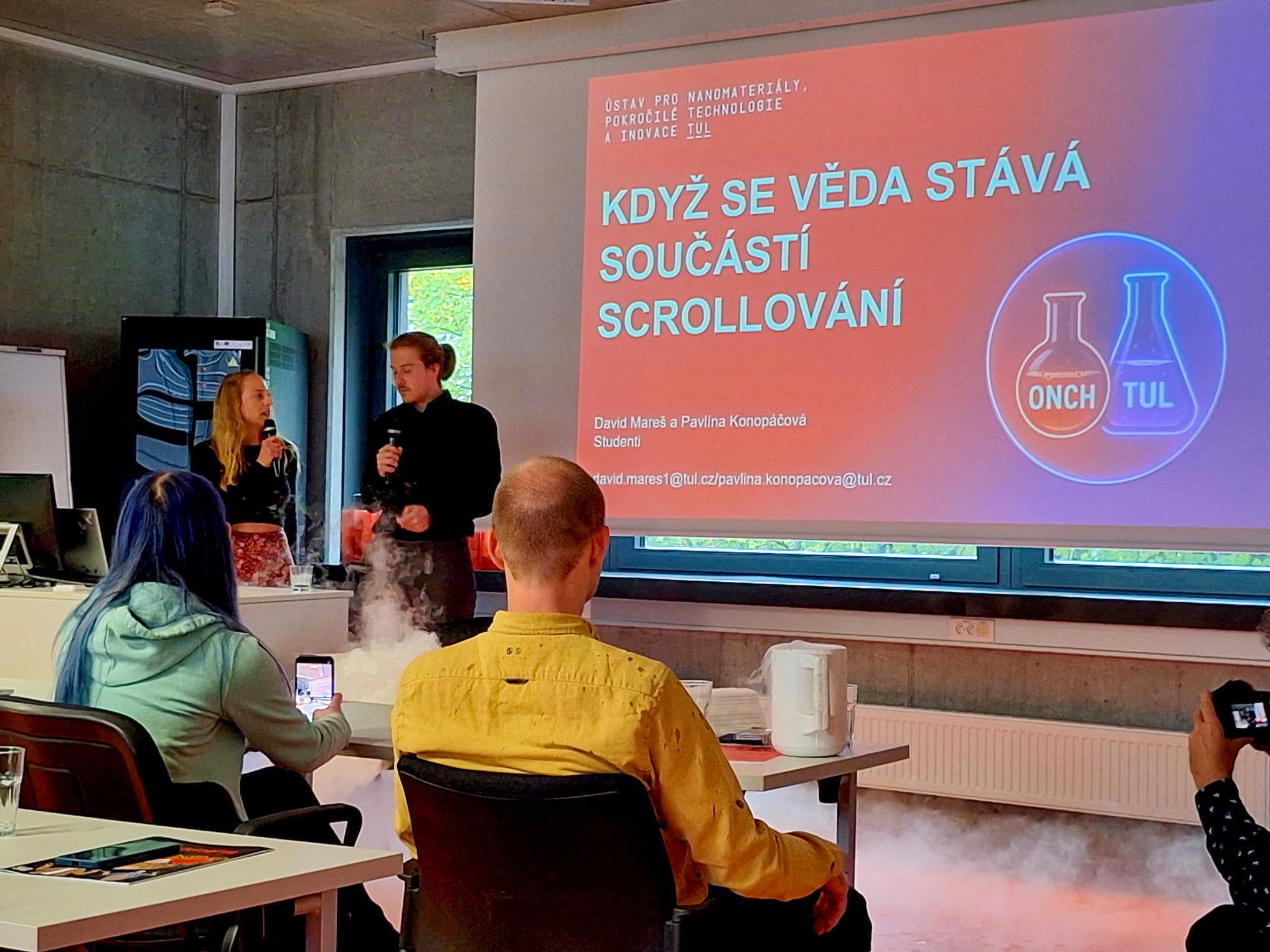
A community that connects science communicators
Zuzana Hubičková, one of the founders of the SciComHub platform, offered a view from the other side. She presented the activities of SciComHub, which creates a space for meeting, sharing experiences and mutual support among science communicators. The platform acts as a safety net for anyone who has decided to bring science closer to the public – and doesn't want to do it alone.
A campaign needs a budget and data
Roman Valeš from TUL reminded us that popularisation is not just about scientific topics. It is also about numbers, strategy and, above all, budget. According to him, marketing literacy is just as important as financial literacy. Without it, it is impossible to communicate effectively or reach an audience. Equally important are good timing, campaign evaluation and realistic expectations.
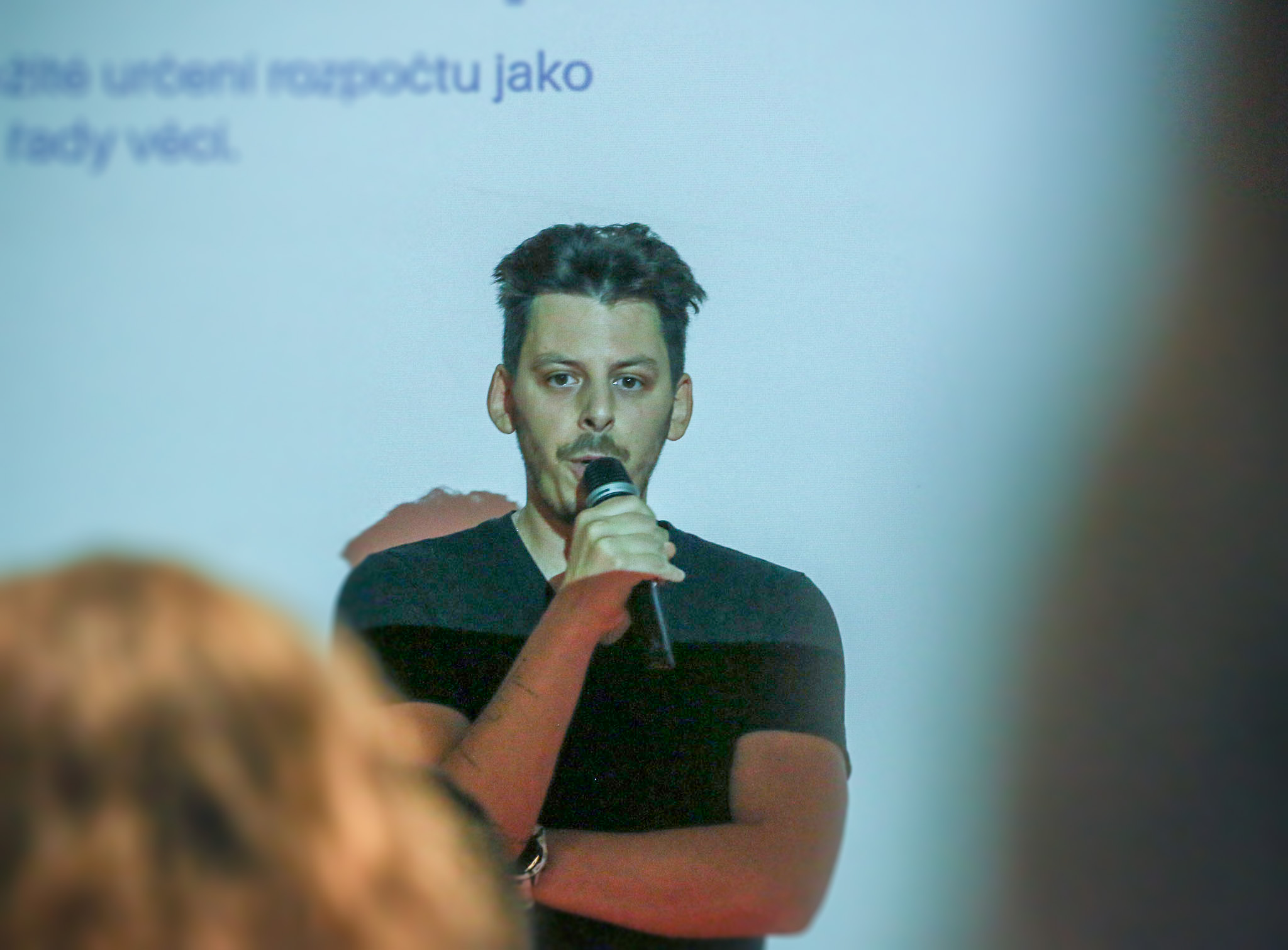
From the corner straight to the screen
Documentary filmmaker Ondřej Herskovič then added a metaphor from the film Dirty Dancing: Baby won't sit in the corner – and neither will science. He shared his tried-and-tested recipe for turning a scientific topic into a video that will appeal to laypeople. Using the LIFE4ZOO project as an example, he showed what the marketing preparation of an audiovisual campaign looks like in practice.

Marketing is not a science, it is a craft
Ondřej Toral from MEGA brought an industrial perspective to the discussion and reminded us that science marketing works like any other marketing. According to him, it is not enough to say what technology can do, but mainly why it should be of interest to anyone. "You don't have to like marketing. It has to work," he summarised. And that is precisely where its power lies: scientific marketing must resonate with the needs of the customer.

Popularisation "on the fly"
Jitka Burešová opened up a burning issue: there is no systemic support for scientific communication. She showed how to get teaching aids into schools without resources or money, but also how exhausting it is to promote these activities without the support of management or grant agencies. Without a press department, without a budget, only with her own enthusiasm, personal contacts and willingness to go the extra mile. Her experience spoke for many in the hall: science should be shared, but without the basic conditions, it often depends on individuals who have not given up.
Free publicity? Just have something to talk about
Lukáš Jokl from ARR Liberec explained the difference between earned, owned and paid media and shared specific tips on how to generate media interest without a large budget. He described everything using the example of the product strategy of the Spanish university spin-off Robic: the only AI social robot certified in Europe as a medical device. It gained enormous earned media support thanks to appropriately chosen communication. "If you have nothing to talk about, keep quiet. If you do, speak clearly and loudly," he reminded us, among other things.
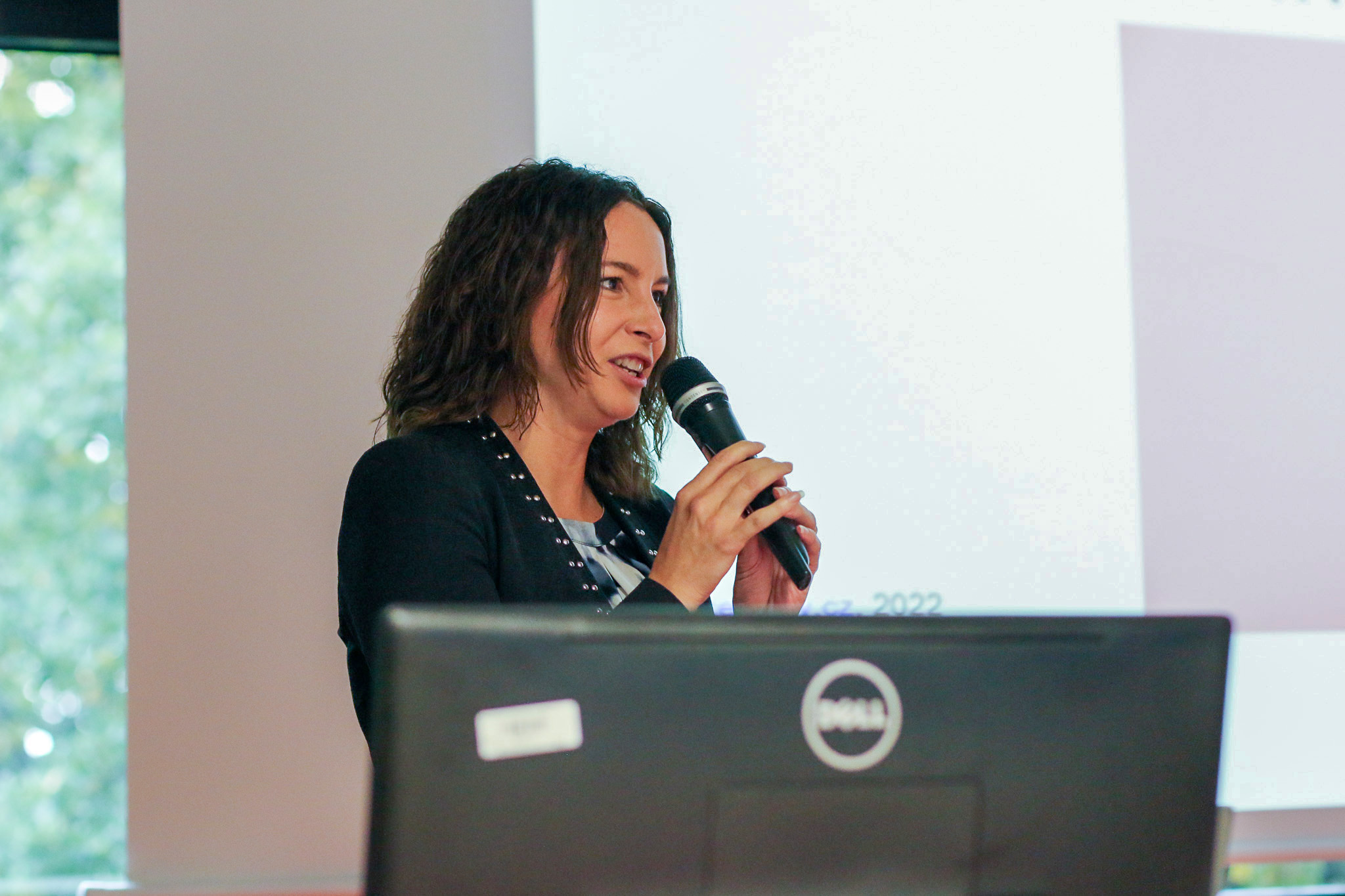
Don't be afraid to invest in yourself
The inspirational finale was Markéta Hujerová (Klíčová), a scientist with international experience at prestigious universities who is able to combine cutting-edge research with business and marketing. Just a few days before the event, she received the L'Oréal-UNESCO For Women in Science award. Today she is collecting awards, but it was not so long ago that she was at the beginning of her career. She openly admitted her past mistakes: she waited too long to create her brand and was unsure about what journalists actually need. "I'm not afraid to pay for a rhetoric course or hire a graphic designer. It pays off many times over," says Markéta.

Sharing as a way out
Share Science! confirmed that popularisation is not an appendage of science, but its natural part. Experiences, tools and real-life examples that can help others were shared.
It turned out that good science communication does not happen by chance, but through a combination of know-how, ideas, cooperation and the courage to try new approaches. If we want research results to end up somewhere other than just in a collection of papers, we need to be able to communicate them effectively, and this event showed that we are definitely not alone in this endeavour.
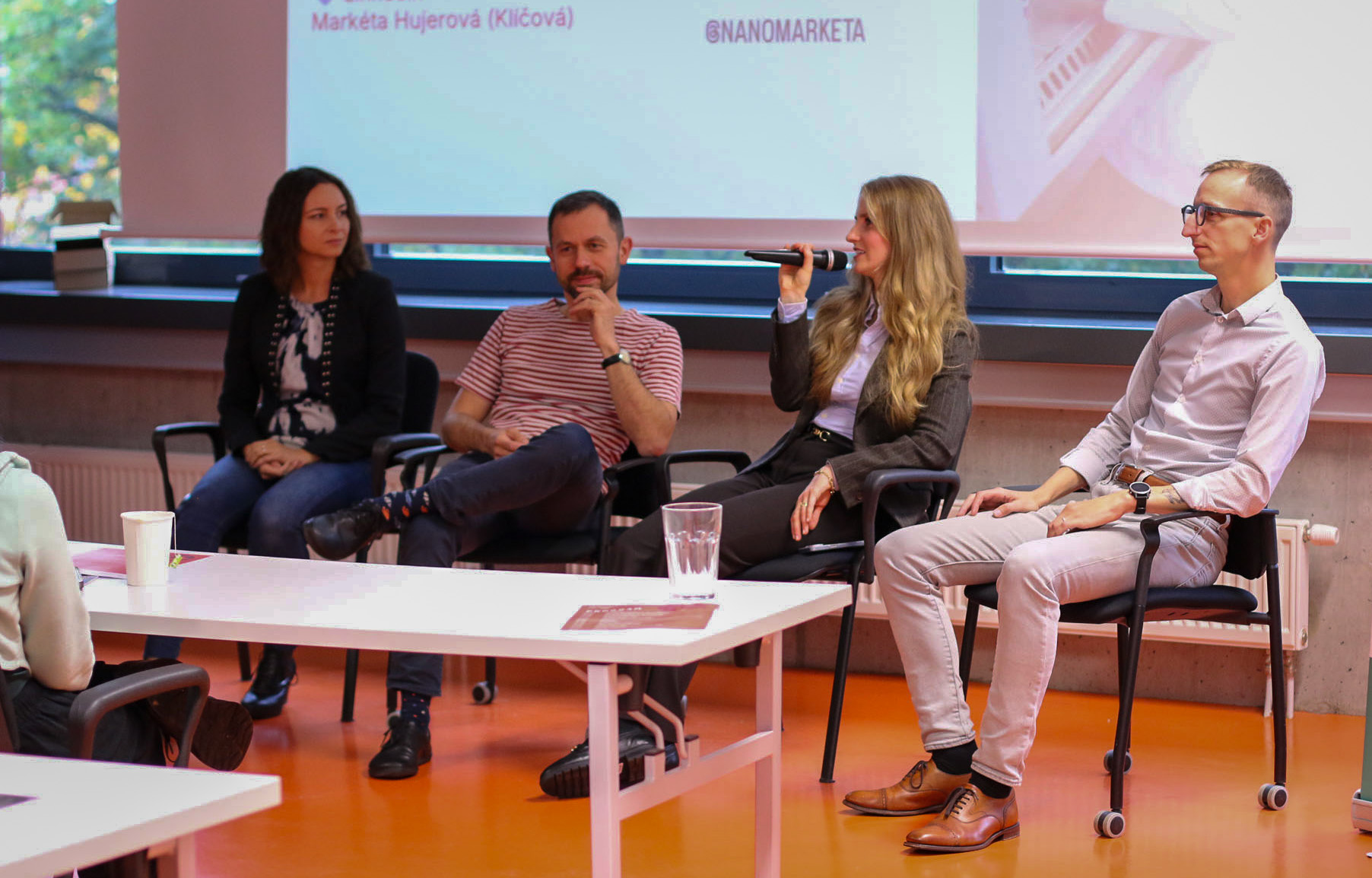
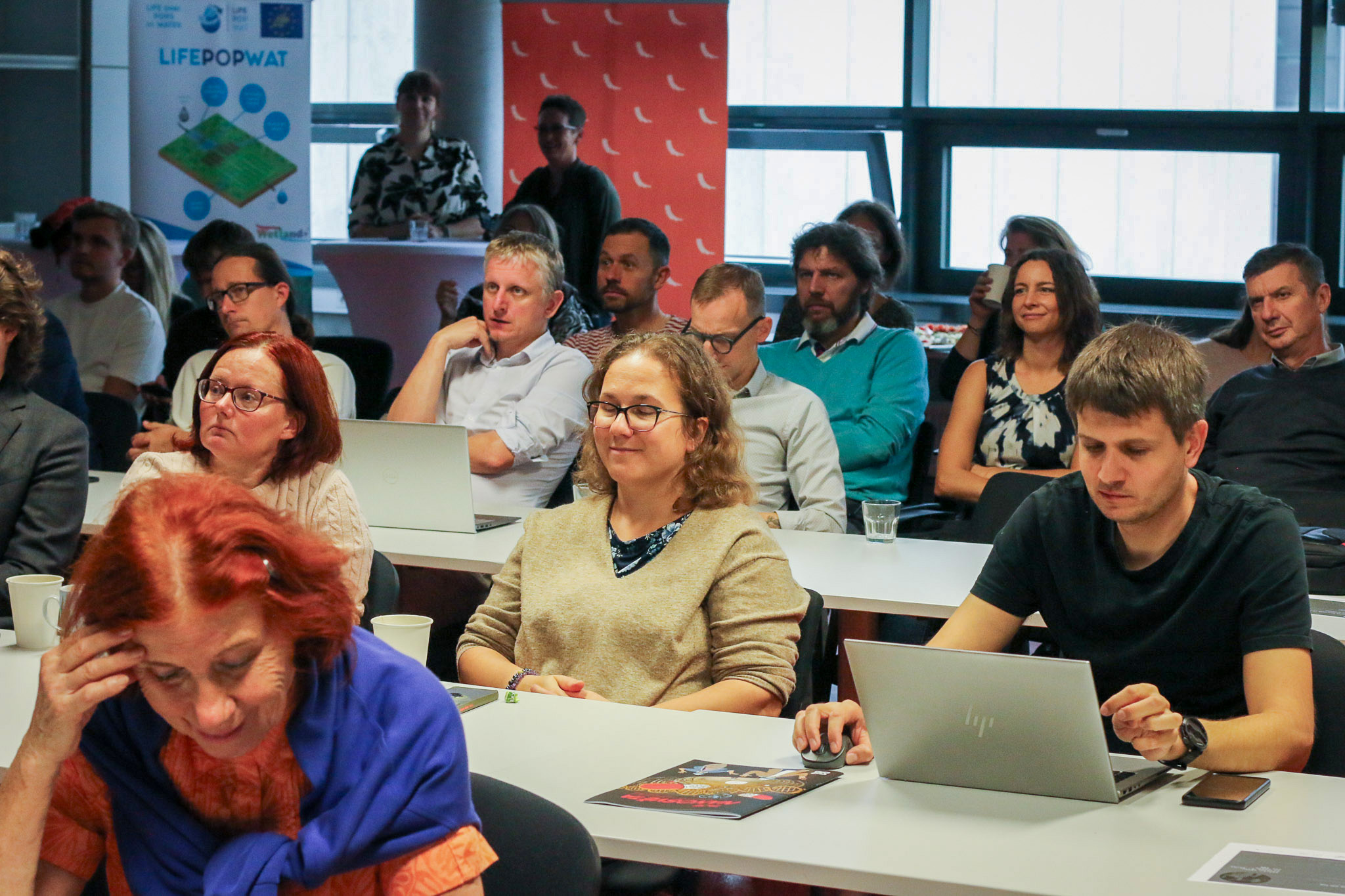




.png)
.jpeg)
.png)
.jpeg)
.png)
.jpeg)
.png)


.png)